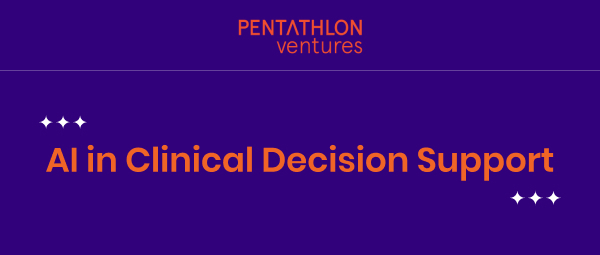Edition 2 l 1st August 2021
Welcome to the second edition of DNA of Scale.
This edition is a 5-minute read on AI applications in healthcare, specifically the diagnosis of disease and planning of care.
1. Shortage of Clinicians
Most countries face a severe shortage of radiologists, radiographers, sonographers, and pathologists. The COVID situation has only added to the problem.
2. Diagnostic Time
The average read time for an X-ray is 2 min. The average read time for CT and MRI is significantly longer – 15 min. and 20 min. respectively. As the complexity of diagnostic scans increases, time-to-report will grow as well.
3. Time-critical Diagnoses
Time-critical applications such as neurology or suspicion of serious injury require fast and accurate diagnosis, sometimes outside of technicians’ regular working hours.
4. Diagnostic errors
134 million adverse events in low- and middle-income countries due to unsafe care result in 2.6 million deaths. 1 in 10 patients in high-income countries is harmed while receiving hospital care. Up to 80% of this harm is preventable. The most harmful errors are due to incorrect diagnosis.
5. Prescription errors
Globally, the cost associated with medication errors has been estimated at $42 billion annually. A considerable percentage of this can be attributed to prescription and dispensing errors.
1. AI Diagnostic Support
AI can identify anomalies in CT scans, MRIs, or radio-graphs, listen for vocal biomarkers in audio files, or process live video for real-time diagnosis. Time savings from automated annotation, quantification, rule-out, and reporting can be significant.
2. AI Scanning Support
The hand-eye coordination required to maneuver an ultrasound probe takes years to develop. AI can assist by providing real-time guidance on where to position the probe and automatically recording when the image reaches diagnostic quality.
3. AI Triaging
AI can process multiple sets of patient data and automate triaging to ensure the most acute and time-critical illnesses receive attention first.
4. AI Prescription Support
Analysis of EMR data and comparison with prescriptions can catch any variation from typical patterns and alert physicians of the possibility of an error.
5. AI Therapeutic Recommendations
AI can analyze EMR data and patient data and provide physicians with recommended personalized therapeutic pathways for each patient.
1. Sub-specialty Expertise
Demand for ultrasound, CT, and MRI are expected to increase sharply due to their advantages in detecting cancers and tumors. Demand for specialist radiologists who can interpret these complicated images will far outpace supply.
2. COVID Backlog
Millions of people have missed vital ultrasound scans for severe conditions like heart disease, lung disease, and cancer because of concerns of catching COVID-19. This backlog will need to be overcome.
3. Hybrid Knowledge
AI will move beyond diagnostic accuracy to improve treatment effectiveness. Expert-driven knowledge and ML-driven knowledge will combine to bring ‘hybrid knowledge’ to patient care.
4. Predicting Temporal Evolution
Beyond predicting specific outcomes, AI will advance in predicting how a patient’s condition will change over time. This can enable personalized patient management and treatment plans.
5. Macro improvement
By integrating clinical data with population statistics, AI will make it possible to predict critical care demand, optimize hospital resource planning, and manage inpatient flows better.
 5 Opportunities
5 Opportunities1. Surgical Data Analytics
Surgeries account for 50% of hospital revenues. AI-assisted analysis of data from devices and implants, imaging, surgical video, EMR, and vital signs can help surgeons make better decisions and improve surgery outcomes.
2. Cancer Detection
The global cost of cancers of the lung, bronchus, and trachea stands at $ 180 Billion. AI can detect specks of lung cancer far more accurately than a radiologist. When detected early and if tumors are small and confined to the lung, almost two-thirds of people survive for at least five years.
3. Reporting
While imaging has improved in leaps and bounds, how findings are reported has stood still. Turning heaps of medical data into standardized, structured, machine-readable reports can open the gateway to data mining and machine learning.
4. Chronic Wound Assessment
Chronic wounds cost global US healthcare systems billions of dollars a year, rivaling cancer’s global costs. AI-assisted scanning, measurement, and progression tracking can make it easier for physicians to reach decisions.
5. Cardiovascular Diseases
AI analysis of cardiac rhythms can identify arrhythmia at far greater accuracy than human hearing. Processing complete 3D scans instead of 2D slices can detect coronary artery calcification non-invasively. Cardiac disease is the leading cause of death and morbidity globally, and applications like these can reduce the cost to healthcare providers and the economy.
- FDA Clears Siemens AI-Rad Companion Organs RT Intelligent Software Assistant
Why it’s important Identifying and contouring organ anatomy helps ensure radiation doses are targeted with minimum exposure to normal tissue. - Google joins $200M round for Tempus , now valued at $8B
Why it’s important Employing AI to analyze extensive clinical and molecular data makes ‘precision medicine’ and personalized therapeutic pathways possible. - Volta lands FDA clearance for AI cardiac electrophysiology software.
Why it’s important Arrhythmia, or Atrial Tachycardia, can be controlled or corrected by burning (radiofrequency) or freezing (cryotherapy) faulty electrical pathways. AI-assisted real-time annotation of 3D anatomical and electrical maps can help physicians localize the abnormalities better. - Artificial Intelligence-enabled radiology platform DeepTek bags funding
Why it’s important – India has less than 50 radiologists for every 1 million people! AI-assisted automation of triaging, lesion identification, and reporting promise a solution. Also, Pentathlon was part of this round of funding :-P) - Zebra Medical Vision Secures FDA Clearance for Its Breakthrough in Orthopedic Surgery Planning
Why it’s important – Orthopaedic procedures worldwide require CT scans or MRI imaging to assist with pre-operative planning. These are expensive, and sometimes just unavailable. AI algorithms can reconstruct a CT scan quality 3D model of the patient’s bones from standard X-ray images!
